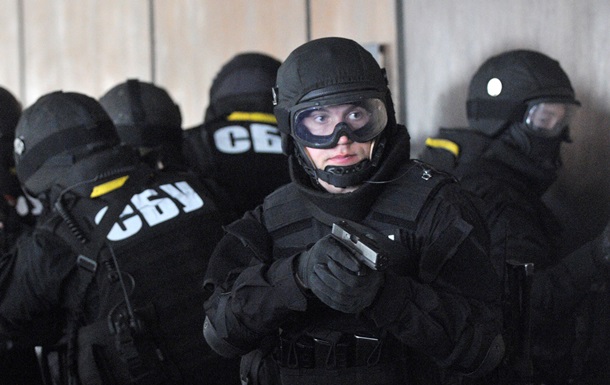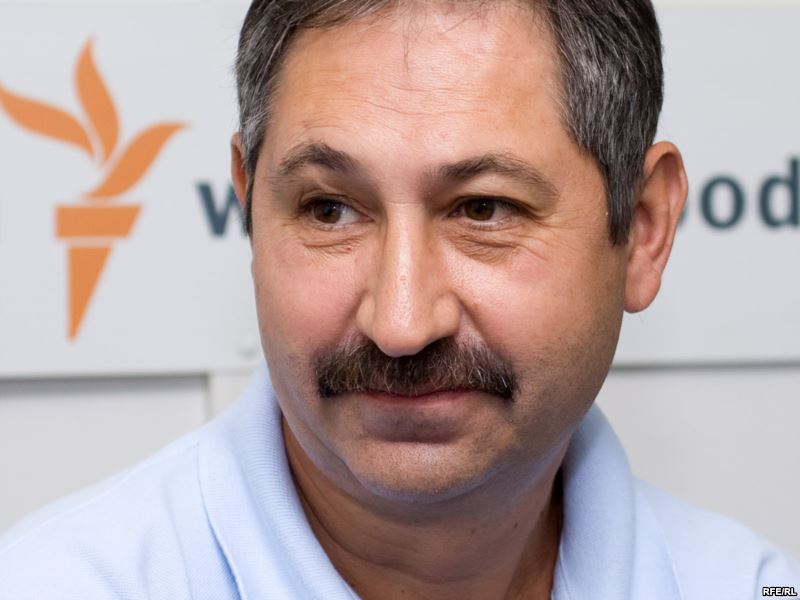For the third year in a row after the Euromaidan Revolution, Ukraine fights one of its main inner enemies – corruption. Some successful steps have already been made in this direction, however, the battle is still in full play. Moreover, there are signs that battling corruption is becoming dangerous again. Lately, several incidents have shown that the system is involving its heavy artillery – the security services (SBU) – to oppose being exposed. The roots of the institution lead to the Soviet Committee of State Security (KGB). For many years, its main function was to serve the interests of the government. Moreover, it was infested with Kremlin agents. Let's take a look how the institution functions in the wake of upcoming reforms and what are the main obstacles on its way to changes.
Organizing fake protests to discredit anti-corruption activists

On 9 April 2017, a couple of people gathered near the house of Vitaliy Shabunin, the head of the NGO Anti-Corruption Action Center. They were holding posters accusing the anti-corruption activist of corruption. Those who criticize the activity of Shabunin accuse him in appropriating grant funds under the cover of fighting corruption and developing programs to address HIV/AIDS. Critics also discuss the origins of his house which cost $83,000. However, the protesters standing near Shabunin’s house couldn’t explain any of that. They just stood and held posters, not being able to explain why they were there.
The anti-corruption activist himself stated that the protest was organized by the Security Services of Ukraine (SBU) and the deputy head of it Pavlo Demchyna in particular. The reason for it, according to Shabunin, was SBU’s revenge for the lawsuit of the Anti-Corruption Action Center against the Security Services after the latter failed to submit the declarations of its employees. As the SBU considers this information as a state secret they report on their assets not to the National Agency on Corruption Prevention (NAZK), but to their own closed system. The Anti-Corruption Action Center considered these actions illegal.
The first evidence that the protest could have been really fake appeared quite soon. The activists of AutoMaidan [a pro-democracy protest movement which appeared during the Euromaidan Revolution] said that SBU asked them to film a house from a drone. They agreed as the SBU told them it would be not the house of Shabunin but some separatist. When the activists figured out whose house it really was was they called SBU which even did not come to collect the video after it was filmed. In their statement, the AutoMaidan said that the case shows that Security Services are turning into insecurity services for the country.
The SBU immediately refuted any involvement in organizing the fake protest. However a few days after, journalists of Radio Svoboda published more detailed proof that indeed the SBU supervised the protests from the very beginning. In the version of the SBU employee who was present near the building at the time of protest, the Security Services were, in fact, trying to reveal some organizers of the fake protest.
Persecution of another anti-corruption activist
Supposed SBU employees also came to the house of the member of the Anti-Corruption Action Center Oleksandra Ustinova. Video: Facebook of Oleksandra Ustinova
On 10 May 2017, the court hearing on the case of the Anti-Corruption Action Center against SBU regarding their declarations took place. It was the last public hearing, as afterward the Administrative Court of Kyiv decided to have only written proceedings on the case.
After the hearing took place, Oleksandra Ustinova, another member of the Anti-Corruption Action Center, complained that the SBU employees came also to her house. She wrote that after the hearing at the court where the Anti-Corruption Action Center challenged the SBU for classifying their declarations, SBU employees came to her house when they were expecting nobody to be home.
The unexpected guests told the concierge that they are looking for some prosecutor and showed the documents proving that they are investigators. Before that, Ustinova has already communicated with the supposed SBU employees. When she was returning from a vacation they met her at the airport and introduced themselves as journalists. During the recent accident, her boyfriend was ill and stayed at home. So when he heard some noise and came out he asked the supposed SBU employees what they were looking for. They ran away. Ustinova published photos and a video of the incident.
She assumes that the SBU is making these visits to produce a film to discredit her anti-corruption activities and raise suspicions that her apartment, car and vacation were paid for with corrupt money.
The activist also says that the visits of uninvited guests aim not only to discredit her organization, but to kill the National Anti-Corruption Bureau, the only independent law enforcement institution, and to destroy the activists who defend it. To prove her words Ustinova refers to the incident in the airport when the supposed “journalists” sarcastically scoffed at the Anti-Corruption Action Center protest near the Parliament against the NABU auditor controlled by the President Petro Poroshenko.
NABU is indeed considered to be the last independent anti-corruption body in Ukraine. So far the attempts of the government to set control over it have not succeeded mostly because of the pressure of the international partners of the institution.
Controversial connections of the SBU and its overuse of power
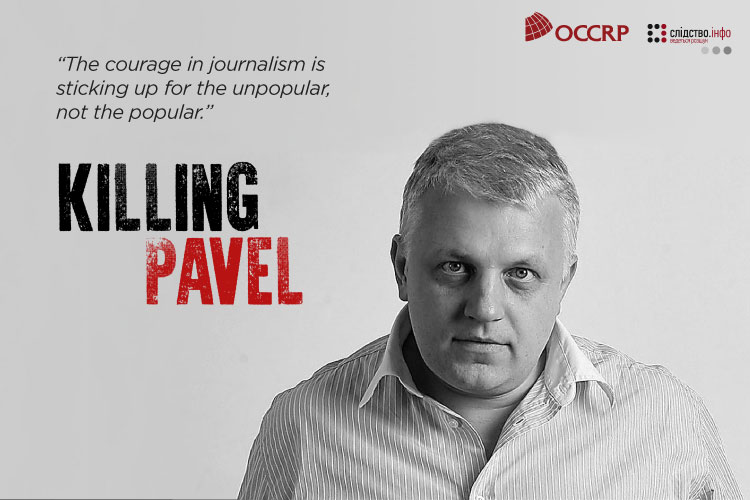
Links to Russian intelligence. From time to time the name of the SBU shows up in other controversial cases.
On May 10, the documentary investigation by four Ukrainian journalists from the Organized Crime and Corruption Reporting Project and the investigative team Slidstvo.info called “Killing Pavel” was published. The work went in parallel to the official investigation of the law enforcement forces into the murder of Ukrainian Belarus journalist Pavel Sheremet. On 20 July 2016, he died when his car exploded in Kyiv. So far, Ukrainian law enforcers have not uncovered the crime.
However, the documentary on the Sheremet's murder contains an important detail. According to the journalists, in the night before the murder, a former SBU employee was following the journalist. The authors of the documentary say that they revealed the details which the official investigation did not reveal:
“Was it incompetence, unprofessionalism, were the investigators of the National Police, the Security Service, and Prosecutor General simply overworked which resulted in only a half-hearted investigation, or is there some political will which blocks the progress of the case in a certain direction - that we do not know yet," said Dmytro Hnap, one of the authors of the documentary.
After the film was published, the SBU told that the employee featured in the video was fired in 2014.
“Maybe he is somehow related to Federal Security Service (FSB) of Russia, we could not dig to it,” said Olena Loginova, one of the coauthors.
Before going into details of why the links of SBU and FSB are quite possible, let's take a look at one more controversial case with the involvement of SBU.
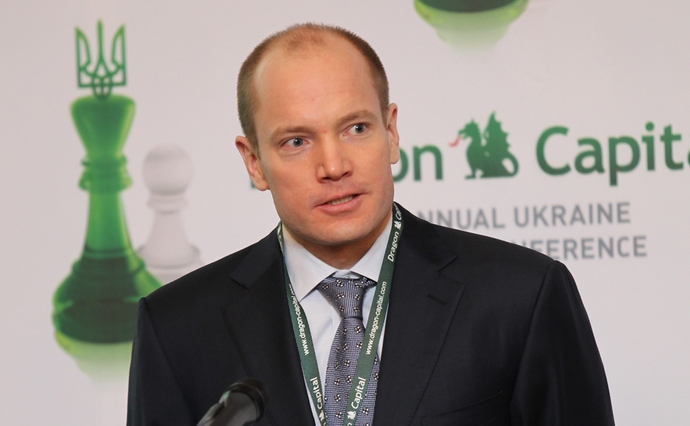
Persecuting business. On 26 April 2017, SBU came to Dragon Capital, one of the biggest Investment companies in Ukraine, with searches. The official reason was the illegal use of some software. In result, 3 computers with “spy software produced in the Russian Federation,” as stated by the SBU, were confiscated by the Security Services employees. In fact, the software was just some program which controls the working time of the Dragon Capital's employees.
However, Tomas Fiala, Chief Executive Officer of Dragon Capital, who often lashed out at the political situation in Ukraine and criticized the law enforcement structures because of their attempts to influence business, sees another reason for searches in his company. He considered the incident an attempt to pressure him in the case of a Skymall located in Kyiv. The conflict around the mall involves the Britain Fund DUPD (Dragon Capital is one of its shareholders) which invested in the company Arricano, which owned 50% of shares of the mall on the one side. On the other side, there was the odious businessman Andriy Adamovskyi who owned the package 50%+1 through the company Stockman headed by Oleksandr Granovskiy, an MP from the Petro Poroshenko's Bloc.
Yehor Firsov, an ex-MP who was deprived of his mandate after leaving Petro Poroshenko's Bloc party, is confident that the law enforcement is covering the raidership of Adamovskiy and Hranovskiy.
However, such actions of the SBU also taint the international investment attractiveness of Ukraine. In this regard, the question of reforming Ukrainian law enforcement structures and the SBU, in particular, becomes more and acuter.
SBU reform is needed
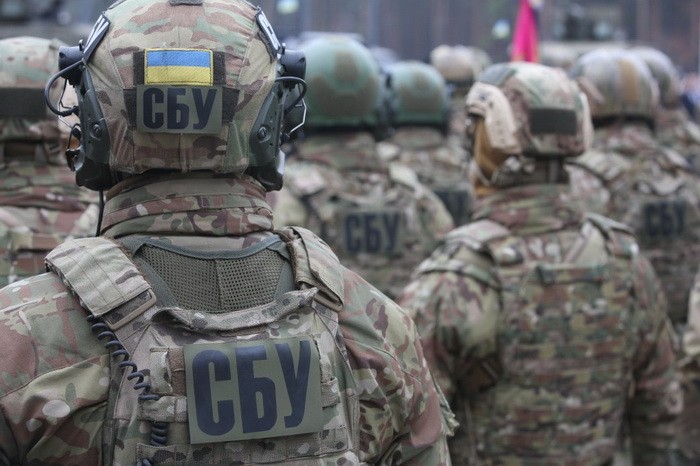
Saying that the SBU is a totally corrupt institution which only implements orders protecting the government’s interests would be unfair. Under the conditions of a war in eastern Ukraine, with Russian security services trying to organize provocations inside the country, the SBU does a lot to prevent them. Some successes are revealed to the public, some for security reasons are not.
However, one needs to remember that for more than 20 years of Ukraine's independence, the SBU had not been reformed, and only after the Euromaidan Revolution did real changes become possible.
SBU is the direct successor of the State Security Committee of the USSR (KGB). The main task of the KGB in Russia, Ukraine, or elsewhere in the Soviet Union was rather taking control over its own citizens than protecting them. The whole machine aimed to intimidate, to sow fear, and to make any resistance to the system impossible.
When the Soviet Union collapsed, these structures received other names, like the Federal Security Service in Russia (FSB), but the meaning remained. In Russia, the institution initially focused on business (controlling, supporting and taking advantage of it).
Before Euromaidan, the SBU in Ukraine had been perceived as the government's assistant which covered its crimes and served its interests, including in business. However, another weak point of the institution was its close connection to the Russian Security Services, as many employees of the institution used to work for KGB. It’s hard to imagine that a person who once worked in this repressive structure could remain unaffected and would not maintain old connections.
Moreover, it has been revealed that the connections of the SBU to Russian FSB had a great effect on the events after the Euromaidan Revolution. In 2014, then head of the SBU Valentyn Nalyvaichenko stated that during the three months of the revolution, three groups of persons occupying high positions in the FSB worked within the structure of the SBU. He claimed this proves that Moscow together with the runaway president Viktor Yanukovych were planning the occupation of Crimea and following events in Donbas.
The lustration. In May 2017 the Head of the Department on the Lustration of the Ministry of Justice stated that lustration in Ukraine is completed by 98%, including in the General Prosecutor's Office, Ministry of Internal Affairs, Ministry of Defense, courts, Ministry of Justice, all the state institutions, local governments and SBU.
But today there are more and more signs that the old orders return to the SBU.
First, when the lustration in SBU was only launched, it was identified that 283 employees of the institution had previously served in or collaborated with the KGB. However, lustration could be applied in only 24 cases. Later, that number dropped to 17. But 2 out of them were serving in the Anti Terrorist Operation (ATO) in eastern Ukraine. So in the end, only 15 out of 183 SBU employees with relations to the KGB were eligible for lustration.
In 2016, Ukrainian media wrote that 89 SBU employees managed to avoid lustration due to their participation in the ATO.
Overall, 17,284 employees of the SBU should have been checked. Before the lustration started, 2,293 employees quit. More of them resigned when lustration was started.
At the same time the current head of the SBU Vasyl Hrytsak stated that because of the formalistic approach to the lustration, the institution lost a lot of valuable employees.
Returning to the old ways. The information about the old guard returning to the SBU appears in Ukrainian media. Recently the journalist and ex-press secretary of SBU Stanislav Rechynskyi wrote about a few personnel reshuffles within the institution which point out that “everything in the SBU returns to the old commercial rails.” He provides the example of Oleksandr Dovzhenko, who was moved from the “poor Chernigiv Oblast to the rich Odesa Oblast.” According to Rechynskyi, Dovzhenko should have been lustrated at least because of two reasons. However, he was given a chance to "redeem his guilt with blood" by falsifying the elections. Another example of Rechynskyi is Sergiy Semochko who was appointed in Kyiv and Kyiv Oblast. “His specialization was 'counterintelligence protection of business' which means pressure on business,” said the journalist.
The reform. In March 2017, when the SBU turned 25 years old, the president Poroshenko solemnly announced that the institution will be reformed taking into consideration the best practices of the countries of EU and NATO members.
These three changes inside the SBU in terms of the reform are highly expected:
Change of jurisdiction. “Thus, the investigation of some crimes of the officials and crimes committed by organized crime groups will gradually become a responsibility of the National Anti-Corruption Bureau, the State Bureau of Investigations and the National Police of Ukraine,” said Poroshenko. Thus, the SBU will be responsible only for crimes against the national security.
Strengthening of Ukrainian counter-intelligence and development of an intelligence network, according to the level of threats which today's national security faces.
Establishing of a mechanism of control over the SBU by society and parliamentarians. It was the principle on which the international advisors insisted as the SBU should not be under control of one person or a body.
However, there is also a strong resistance to these transformations.
“If this reform is carried out, neither the president nor politicians will not be able to give personal orders to the SBU. However, the top state officials want to continue to use the SBU as a 'scarecrow.' This is the main reason why the institution was not reformed neither by this president, nor the previous one,” said Mykola Malomuzh, the ex-head of the Foreign Intelligence Service of Ukraine.
Another obstacle on the way to reform is that the institutions which should take over the responsibilities of the SBU are quite young and do not work in full force to replace the SBU.
Still, after the beginning of Russian aggression in the east of Ukraine, society reconsidered the influence of Russian intelligence on the processes happening in Ukraine. Since decommunization processes were started in Ukraine, society received access to the archives of the SBU.
“This war has played an important role – all these so-called republics in eastern Donbas and the occupation of Crimea showed that the Soviet legacy is still drawn back to the Soviet Union and Russia. It is one of the reasons why the war that against Ukraine takes place.
This aggression has given an opportunity to rethink this legacy. This is a long educational process. And understanding this provides an opportunity not only to study the documents in Ukraine, but also to forge contacts with colleagues abroad - particularly from the archives of special services of Poland, the Baltic States,” summarized Andriy Kogut, the head of the archive of the SBU.
While the problem of interference of the Russian security services into Ukraine's life is slowly recognized and the work on its reduction is taking place, the inner control of the important areas of life by Ukrainian state officials is something which they have no will to refuse.
The problem becomes deeper when Ukraine tries to break the old corrupt system and faces the resistance of the current government which uses all its possible means to oppose change. Using the SBU in the interests of the state officials is only one tool against the activists. Recently the resistance was registered officially when the legislation obliging anti-corruption NGOs and activists to declare their assets was adopted.
The resistance of the state officials towards Ukraine's transformation leads to frustration among the population and leads activists to bring the question “How is the new power in Ukraine different from those who ruled the country before?” to the agenda.

